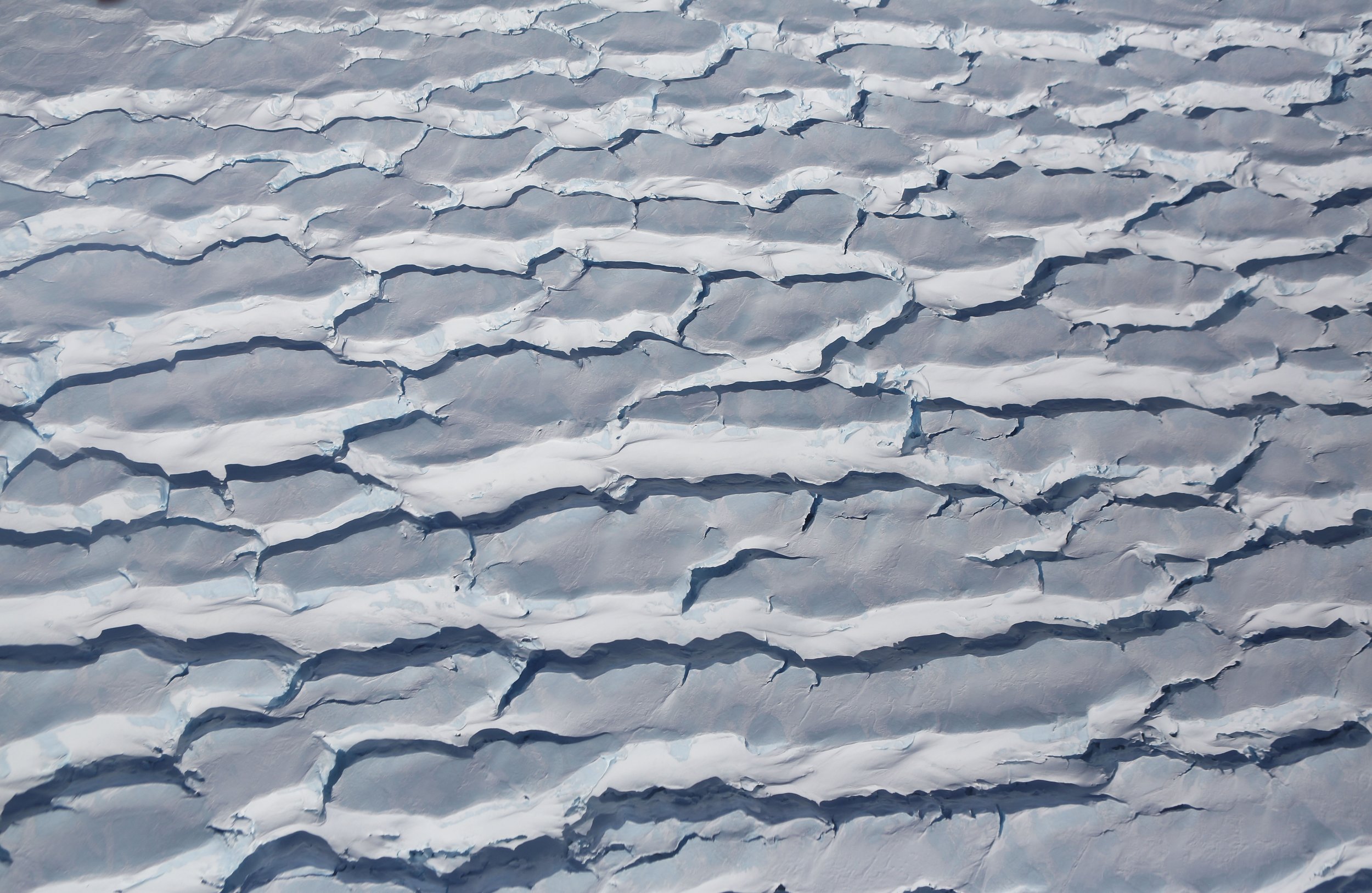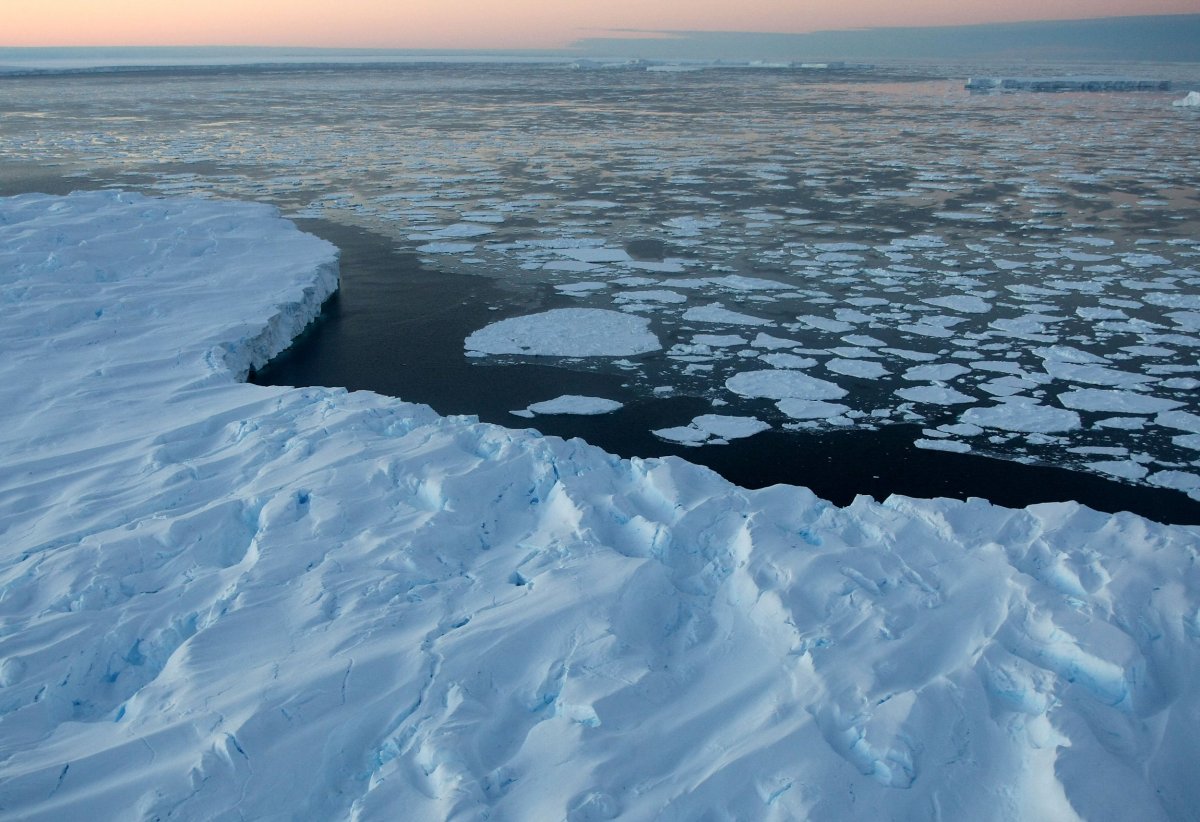
Update | Antarctic and Arctic ice are extreme environments—some of the most extreme on Earth and considered sterile places where nothing can survive.
But new evidence has found living bacteria in the polar ice and snow—and not from warming temperatures like those observed in the revived pathogens in permafrost. Traces of gas that are produced by bacteria were foundin both Arctic and Antarctic ice, revealing evidence of living bacteria, according to a study published Wednesday in the Journal of the Royal Society Interface.
"When we say extreme, we're talking about low density community—these organisms are sparse within the snow. The snow is nutrient-poor, it's very cold and there's not a great deal of water to play with," Kelly Redeker, lead author and biologist at the University of York, told Newsweek. "So these are all strikes against living things, and of course the UV light in the Antarctic in particular. These are all things that are strikes against things succeeding. And so to find that they're still viable and still active, I think, is particularly exciting."

Researchers looked at snow samples in situ—or in its natural state—as well as samples sterilized with UV lights. The UV lights zapped traces of methyl iodide—which countered what was expected under the assumption that the system should only be influenced by chemistry rather than living bacterium. They found levels of methyl iodide, a gas produced by marine bacteria, in the natural snow. Traces of the gas were observed at tiny concentrations, but the results were enough to determine living bacteria was very much viable and active in the ice thought of as entirely sterile.
"There's lot of people that have been edging towards this for a while, but we've been able to show in situ that these things are happening," Redeker said. Taking bacteria from their environment to the lab is "great, but it's no longer the natural conditions in which they're found...All the other results to date have been [samples] that have been taken back to the lab."

There is a minor implication to what we've known about carbon dioxide levels over the course of hundreds of years as well, according to the study. Ice cores—which are ice samples that can be hundreds of feet long—can reveal traces of atmospheric and climate conditions from hundreds of years ago. This study suggests that some of the carbon dioxide detected in those ice samples may have been produced by bacteria respiration—which could mean carbon dioxide levels of the past are lower than we expected.Redeker said this could mean that human impacts carbon dioxide levels could be greater than previously understood, though the differences are probably relatively minor.
The findings, though the first time observed in natural polar ice and snow, weren't particularly surprising for Redeker. Organisms can adapt to extreme environments, and a number of other algae and other organisms are known to have protective mechanisms, he added.
"It's not suprising in the sense that we know that organisms that find themselves in stressful environments find ways to adapt," Redeker said. "Especially in the polar regions where UV radiation is enhanced. It probably shouldn't be surprising that there are organisms that have found ways of dealing with that."
The findings do, however, speak volumes about life beyond Earth in other extreme environments. Beyond Earth, there's something dubbed the "Goldilocks zone," which most commonly refers to places where liquid water is available and life is viable. But this study tosses that to the wind.
Even where only frozen water is available, life could persist. It doesn't mean life would develop or advance on a frozen planet, Redeker emphasized, but rather, "if it had a past history where it was a bit warmer and life had developed, it may be able to persist longer than we thought outside of that Goldilocks zone."
"It broadens the horizons of what is conceived to be possible in terms of life—not necessarily intelligent life—but life outside of our planet," he added.
This article has been updated to include additional information about other organisms that have adapted to extreme environments.
Uncommon Knowledge
Newsweek is committed to challenging conventional wisdom and finding connections in the search for common ground.
Newsweek is committed to challenging conventional wisdom and finding connections in the search for common ground.
About the writer
Sydney Pereira is a science writer, focusing on the environment and climate. You can reach her at s.pereira@newsweekgroup.com.
To read how Newsweek uses AI as a newsroom tool, Click here.








